
Copernical Team
ESA plans for low-orbiting navigation satellites

Satellite navigation is headed closer to users. ESA’s Navigation Directorate is planning an in-orbit demonstration with new navigation satellites that will orbit just a few hundred kilometres up in space, supplementing Europe’s 23 222-km-distant Galileo satellites. Operating added-value signals, these novel so-called ‘LEO-PNT’ satellites will investigate a new multi-layer satnav system-of-systems approach to deliver seamless Positioning, Navigation and Timing services that are much more accurate, robust and available everywhere.
Webb explores a pair of merging galaxies
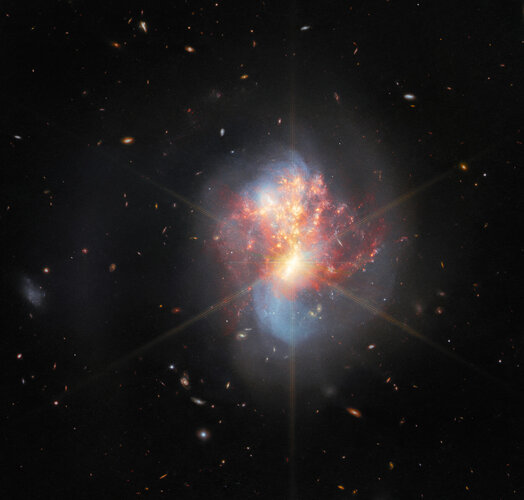 Image:
Webb explores a pair of merging galaxies
Image:
Webb explores a pair of merging galaxies Partial solar eclipse takes a bite out of the sun
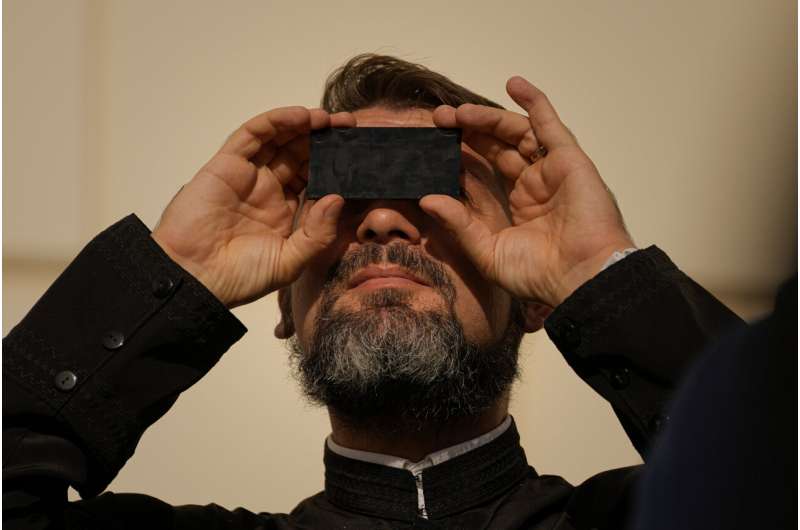
Lucy spacecraft captures images of Earth, Moon ahead of gravity assist
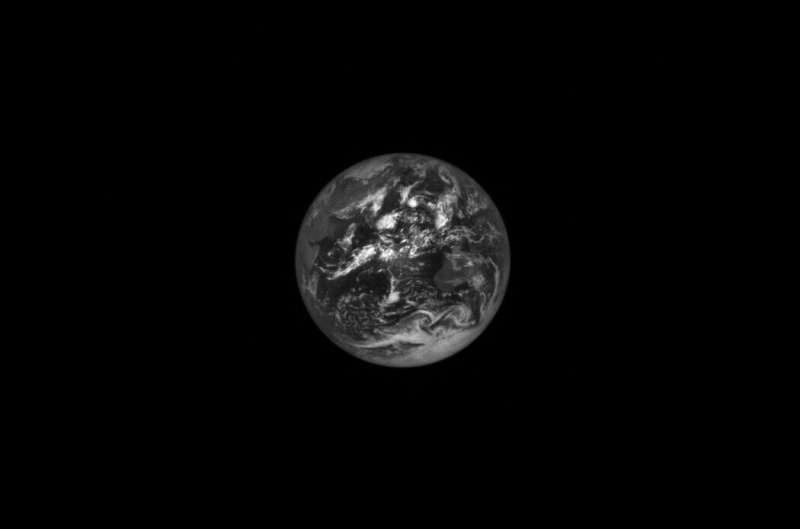
NASA's Lucy spacecraft captured an image of the Earth on Oct 15, 2022, and an image of the Earth and the Moon on Oct.
Researchers create lunar regolith bricks that could be used to construct Artemis base camp
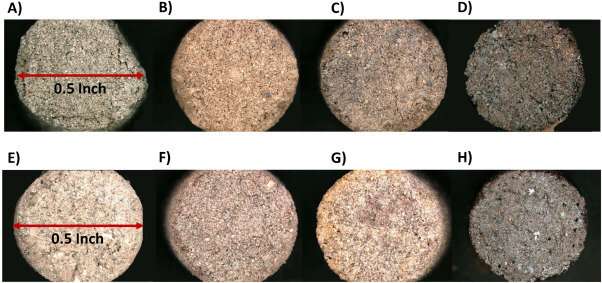
As part of NASA's Artemis program to establish a long-term presence on the moon, it aims to build an Artemis base camp that includes a modern lunar cabin, rover and mobile home. This fixed habitat could potentially be constructed with bricks made of lunar regolith and saltwater, thanks to a recent discovery from a team of UCF researchers.
Associate Professor Ranajay Ghosh of UCF's Department of Mechanical and Aerospace Engineering and his research group found that 3D-printed bricks of lunar regolith can withstand the extreme environments of space and are a good candidate for cosmic construction projects. Lunar regolith is the loose dust, rocks and materials that cover the moon's surface.
The results of their experiments are detailed in a recent issue of Ceramics International.
To create the bricks, Ghosh's team in the Complex Structures and Mechanics of Solids (COSMOS) Lab used a combination of 3D printing and binder jet technology (BJT), an additive manufacturing method that forces out a liquid binding agent onto a bed of powder.
ISS habitat is safe for its residents, according to 5-year microbial study
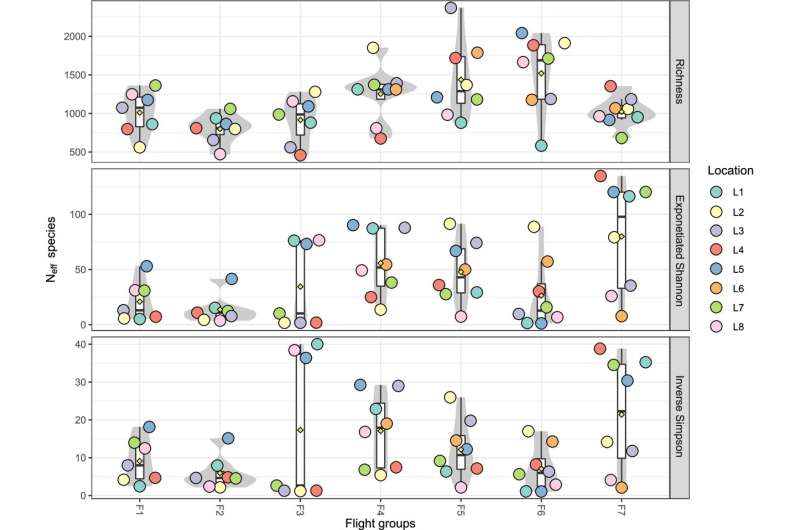
A 5-year microbial study of the International Space Station (ISS) and its astronauts by Lawrence Livermore National Laboratory (LLNL) and NASA researchers has found that the ISS habitat is safe for its residents.
The research effort represents the first comprehensive characterization of the space station's environmental profile (or microbiome) and is the first to compare the ISS microbiome to an astronaut's microbiome using metagenomic DNA sequencing techniques.
Partial solar eclipse begins in Iceland headed towards India
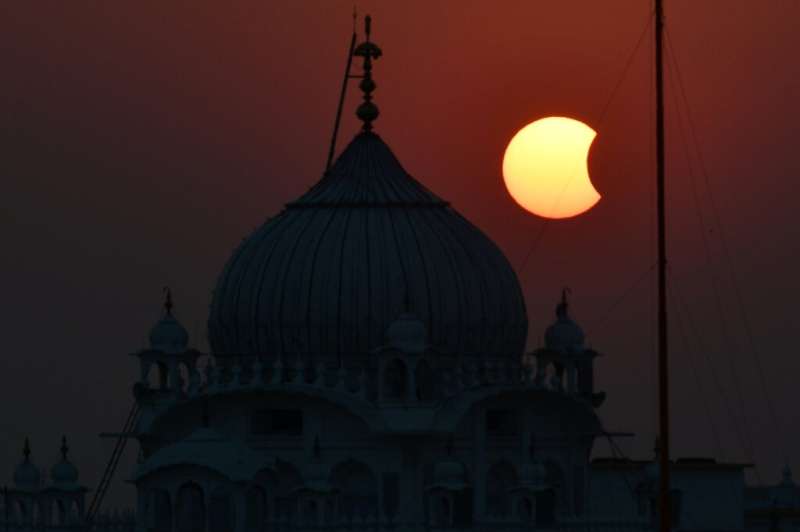
A partial solar eclipse began over Iceland on Tuesday as the rare celestial spectacle started to make its way east across a swathe of the Northern Hemisphere.
The partial eclipse began at 0858 GMT and will end off the coast of India at 1302 GMT, crossing parts of Europe, North Africa and the Middle East on its way, according to the IMCCE institute of France's Paris Observatory.
Amateur astronomers must not stare directly at the eclipse, which will not darken the sky, and should instead wear protective glasses to avoid eye damage, experts said.
Solar eclipses occur when the Moon passes between the Sun and Earth, casting its shadow down onto our planet.
A total solar eclipse happens when the Moon completely blocks the Sun's disk, momentarily plunging a portion of the Earth into complete darkness.
Methane-eating 'borgs' have been assimilating Earth's microbes
 In Star Trek, the Borg are a ruthless, hive-minded collective that assimilate other beings with the intent of taking over the galaxy. Here on nonfictional planet Earth, Borgs are DNA packages that could help humans fight climate change.
Last year, a team led by Jill Banfield discovered DNA structures within a methane-consuming microbe called Methanoperedens that appear to supercharge the o
In Star Trek, the Borg are a ruthless, hive-minded collective that assimilate other beings with the intent of taking over the galaxy. Here on nonfictional planet Earth, Borgs are DNA packages that could help humans fight climate change.
Last year, a team led by Jill Banfield discovered DNA structures within a methane-consuming microbe called Methanoperedens that appear to supercharge the o Mapping planet Earth for better positioning: ESA's GENESIS mission
 ESA's Navigation Directorate is planning a new satellite whose results will enable the generation of an updated global model of Earth - the International Terrestrial Reference Frame, employed for everything from land surveying to measuring sea level rise - with an accuracy down to 1 mm, while tracking ground motion of just 0.1 mm per year. This improvement, at a stroke, will have a major impact
ESA's Navigation Directorate is planning a new satellite whose results will enable the generation of an updated global model of Earth - the International Terrestrial Reference Frame, employed for everything from land surveying to measuring sea level rise - with an accuracy down to 1 mm, while tracking ground motion of just 0.1 mm per year. This improvement, at a stroke, will have a major impact Ride into microgravity with a 'spy' amongst numerous experiments
 On 21 October 2022 at 09:25, the MAPHEUS 12 research rocket of the German Aerospace Center took off from the Esrange Space Center near Kiruna in northern Sweden. It reached an altitude of 260 kilometres before descending back to Earth on a parachute. On board for the first time were nerve cells. The goal is to understand how their electrical signals deviate in microgravity.
The research te
On 21 October 2022 at 09:25, the MAPHEUS 12 research rocket of the German Aerospace Center took off from the Esrange Space Center near Kiruna in northern Sweden. It reached an altitude of 260 kilometres before descending back to Earth on a parachute. On board for the first time were nerve cells. The goal is to understand how their electrical signals deviate in microgravity.
The research te 
